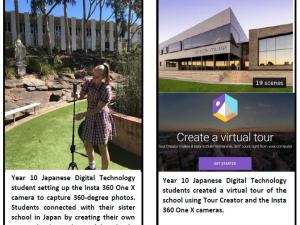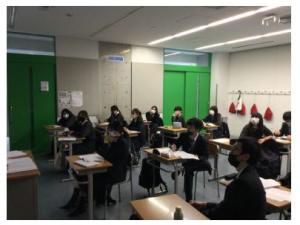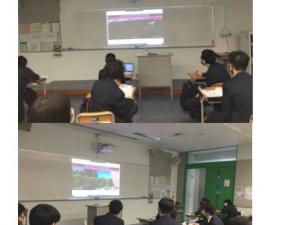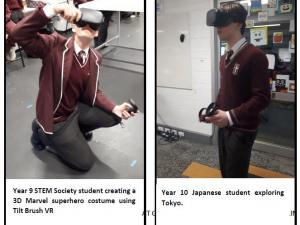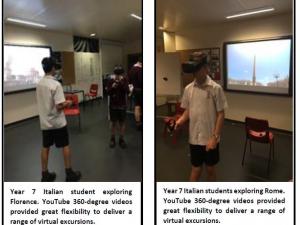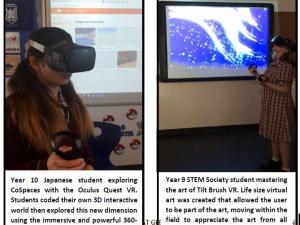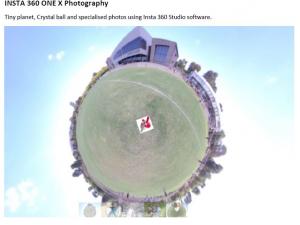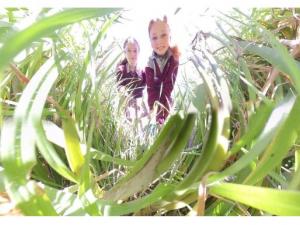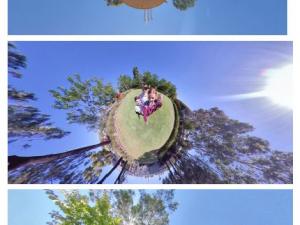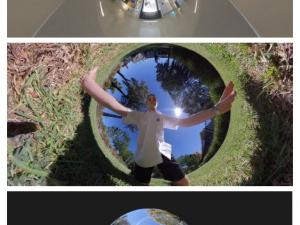School Story: Virtual Reality at Gleeson College, South Australia

Gleeson College, in South Australia was one of the first to borrow a CSER Virtual Reality Oculus Quest Kit from the CSER AI, AR and VR National Lending Library. They grabbed this opportunity with gusto and have been able to use the kit across multiple year levels and subject areas. Despite the pandemic, Gleeson students were able to experience virtual travel and connection with international students via their engagement in VR. Melissa O'Loughlin from Gleeson has documented their experience for us to share with the CSER community.
Making Connections using Virtual Reality at Gleeson College
Gleeson College is a Catholic Co-Educational Secondary College located in the north eastern suburbs of Adelaide. Our school of approximately 800 students recently took part in a trial using a virtual reality kit borrowed from The University of Adelaide, Computer Science Education Research Group (CSER). This cutting-edge technology includes Oculus Quest virtual reality headsets, hand controllers, iPad and Insta 360 One X cameras used across the school to create vivid new experiences. Our students have benefited in immeasurable ways from the immersive activities, and interactive content delivered.
Virtual reality provides a fun way to learn, which is highly engaging. The ability to visit any place on the globe during a pandemic was a golden moment for our students. Virtual excursions provided dynamic learning experiences and gave them a sense of a different place and time. Our language students actively toured the globe, and thanks to the feeling of presence virtual reality provide, they learnt by living the experience. The emotional reactions to their experiences helped form strong memories. Italian students, for example, were thrilled to experience Florence, Pisa, Rome and Venice all in one magical day while Japanese students rode around the backstreets of Japan, scaled the Tokyo Tower and were part of an audience watching sumo wrestlers in action; all virtually of course.
The Oculus Quest units came as untethered, ready to use systems loaded with usable software. National Geographic Explore VR allowed students to experience kayaking along the icy waters of Antarctica, navigate icebergs in a kayak then climb a towering ice sheet using the hand controllers as ice picks. The headset audio complemented each experience, and when students used virtual reality across our subjects such as Science, STEM or HASS, it allowed for a curious exploration of new information.
YouTube 360-degree videos played on the headsets was a game-changer. There’s an abundance of free educational videos available which provides clear, immersive explanations of the studied subjects. Students are part of real-life scenes and cultures; senior tourism students used this platform to explore sustainable tourism. It sparked new ideas through the sensory-based platform, and we could see they were invested in their learning and gained greater empathy through this engaging experience. Although virtual reality will never replace real excursions, it was used as a powerful tool to allow experiences to happen that would have otherwise been impossible, especially during a pandemic.
Gleeson College used the virtual reality kit to deliver new experiences, but more importantly, we created new content. Our students explored numerous applications such as Google Tour Creator, Tilt Brush and Co Spaces to bring three-dimensional work to life. Year 10 Japanese students connected with our international school in Japan by using the Insta 360 One X cameras to take photos around the school. These images were uploaded to Google Tour Creator, and students added short audio files of themselves narrating the scene in Japanese. This innovative 360-degree virtual tour of Gleeson College showed a student perspective of a day in the life at school. We were able to prepare visually impressive, personalised content for students who could not participate in our annual International Study Exchange Program. Connecting this bridge during a time when parts of the world were in lockdown gave our connected school in Japan a rich experience and feeling of being at Gleeson College.
The visually impressive nature of virtual reality also lends itself to numerous artistic applications. CSER representative Ben Jucius initially led us to create a new 3D Marvel superhero costume using Tilt Brush. Students eagerly created stunning designs, and each headsets vision could be shared by casting the unit to our interactive whiteboard for the class to see. Inspired by this lesson, students challenged themselves further and created expressive life-sized virtual art. The immersive experience allowed the viewer to be part of the art, moving around and within the masterpiece from all angles. A dragon breathing fire curled in space, and Van Gogh inspired Starry Nights showed the unique possibilities of virtual art and gave a new dimension for student expression.
There’s no doubt that virtual reality is a great tool to support education. Student engagement was high, an inquisitive approach to learning suited our students, and the flexibility of taking part in virtual excursions with no lag time of travel allowed us to increase the number and types of adaptable experiences. We could share information in a new way and shift our students from being simply consumers of technology to being the creators. Virtual reality provides an innovative platform of artistic creativity and multi-sensory experiences to compliment the delivery of the curriculum.
We thank The University of Adelaide, CSER Team for allowing us to be the first school in South Australia to borrow the Oculus Quest Kit. Through direct experiences, virtual reality has engaged our 21st-century thinkers in authentic learning activities allowing them to make deeper connections as empathic global citizens.
Thank you Melissa for sharing your story and highlighting the educational benefits of accessing new technology through the library.
CSER would like to thank the Australian Government Department of Education, Skills and Employment for funding the CSER National Lending Library.


